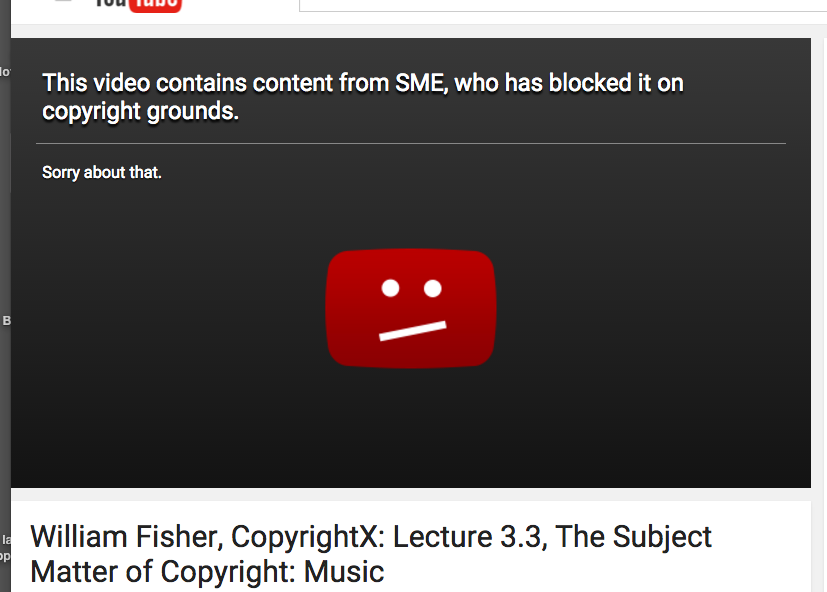CopyrightX: Kagan White House File Shows Administration Split in Lotus v. Borland
Several of the CopyrightX teaching fellows used the 1990s Lotus v. Borland copyright case in their classes last week. In an excellent Case Study, Professor Fisher and TF/Berkman Center intern Ben Sobel dissected the background and holdings in this complex case.
An interesting aspect of the case study was the use of documents that came to light during Elena Kagan’s Supreme Court nomination process. In 1995 now-Justice Kagan was Associate White House Counsel, and was involved in the administration’s debate of whether to support Lotus (which had prevailed before Massachusetts U.S. District Court Judge Robert Keeton), or Borland (which won before the First Circuit). Judge Keeton had held the Lotus 1-2-3 menu hierarchy copyrightable, and the First Circuit had reversed, holding it to be an uncopyrightable method of operation under 17 U.S.C. sec. 102(b).
Lotus appealed to the Supreme Court, which granted cert. The question the Solicitor General’s office faced in December 1995 was whether to support Borland or Lotus, and on what grounds. The policy issues were impacted by the fact that by 1995 Microsoft’s Excel spreadsheet program had an 80% market share, leaving Borland’s Quattro Pro and Lotus 1-2-3 in the dust.
Kagan’s files show the extent to which the administration was internally divided over this issue.
The DOJ Antitrust Division (headed by Joel Klein, who led the DOJ’s antitrust suit against Microsoft a few years later), supported Borland, and wanted to argue for affirmance. However, it disagreed with the First Circuit’s holding that the Lotus 1-2-3 commands were a method of operation, arguing instead that the First Circuit should be upheld on the ground that the commands were an uncopyrightable computer language. In fact, it appears that all of the agencies, even those that sided with Borland and wanted the First Circuit upheld, believed the First Circuit’s reasoning to have been flawed.
The Department of Commerce and the Copyright Office argued that the administration should take no position either way on the appeal, stating: ”
We all agree that the First Circuit’s reasoning was contrary to the copyright law, and that the Supreme Court should be apprised of the First Circuit’s legal errors. Professional organizations representing intellectual property experts, such as the American Intellectual Property Law Association, have already well-briefed the Supreme Court on these legal errors. . . . Thus, the Supreme Court should be fully informed on all issues in the case, obviating the filing of
a government brief.We vehemently oppose the filing of this or any amicus brief on behalf of Borland. The filing of such a brief would seriously jeopardize copyright protection for computer programs.
Commerce’s position ruled the day, and the government took no position on the case. The Supreme Court heard argument in early 1996 and tied 4-4 (Justice Stevens did not vote), affirming the First Circuit decision, but limiting it’s holding to that circuit. Since then no other circuit has adopted Lotus, and the First Circuit has not had occasion to revisit the case.
While the internal government memos and correspondence are fascinating, Kegan’s files also contain draft briefs that reflect the “computer language” argument that the DOJ was urging the SG to adopt. Here is the argument, asserting that the result is correct, but on different grounds than those relied on by the First Circuit:
Although the court of appeals’ reading did not lead it to an erroneous result in this case, we believe that, if left uncorrected, the court of appeals’ interpretation could effectively nullify Congress’ decision to treat computer programs as literary works eligible for protection under the Act. …
We agree with the court of appeals’ conclusion that the command hierarchy used by Lotus 1-2-3 is not subject to copyright protection. The command hierarchy is not, itself, a computer program; rather, it is a type of programming language, analogous to the rules of a game. It constitutes an abstract system of rules that defines permissible sequences of symbols, expressed as keystrokes or otherwise, and assigns meaning to those sequence. The hierarchy itself does not instruct the computer to carry out any function; it is the structure of a language that allows the user and Lotus 1-2-3 to communicate. As such, it facilitates, but is not itself, expression. Therefore, it cannot be afforded copyright protection by Section l02(a) which protects only original expression. …
The court of appeals misconstrued Section l02(b) by failing to interpret that provision in the context of the long-established idea/expression dichotomy that determines what is subject to copyright protection. The court appeared to interpret Section l02(b) as a bar to copyright protection for an expressive work of authorship if the work expresses a method operation. Thus, the court erred in that it interpreted “method of operation” as used in Section 102(b) to reach both idea and expression. But, as demonstrated above, Congress intended through Section l02(b) to exclude from copyright protection ideas and similarly abstract concepts such as methods and processes, but not to preclude copyright for the original expression in which such an idea is presented. …
To the extent the court of appeals’ analysis can be read to be inconsistent with’ the idea/expression dichotomy, it should be rejected. By failing to give effect to Congress’s intent to protect expression while leaving idea [sic] unprotected, it raised unjustified doubts about the copyright status of any work of authorship that could be characterized as “procedure, process, system, [or] method of operation.” …
So understood, the command hierarchy constitutes the structure of a language. The keystroke commands form the language’s vocabulary and the hierarchy defines its syntax and semantics. …
The command hierarchy is not a computer program because the hierarchy, i.e. the rules, do not instruct the computer to perform any operation or “bring about a certain result.” 17 U.S.C. 101. Rather, statements that users write in the language according to those rules i.e., macros — constitute such instructions. …In sum, the rules that allow communication with a computer in the Lotus 1-2-3 language, like the rules that allow the playing of a particular game or the practice of a particular accounting system, are abstract ideas that may be expressed in copyrightable form, but are not themselves copyrightable expression under Section 102(a). This analysis preserves the public’s right freely to use the rules to create original expression and serves the fundamental policy considerations of the Copyright Act.



